In celebration of world book day, I thought I’d do a developing literacy post. Without the ability to read then the world of written books remains inaccessible. Literacy is a subject close to my heart, for many reasons. For those of us who are lifelong users of AAC, there seem to be a lot of labels and low expectations around reading and literacy. But many people I know who use AAC have gone on to be literate, it just often needs different teaching approaches. These days there are plenty of online resources for teaching reading to those with complex speech impairments, great news! But definitely, when I was little even access to the internet was not taken for granted. This level of information on developing literacy for AAC users was not available to my family and teachers.
Phonics and literacy
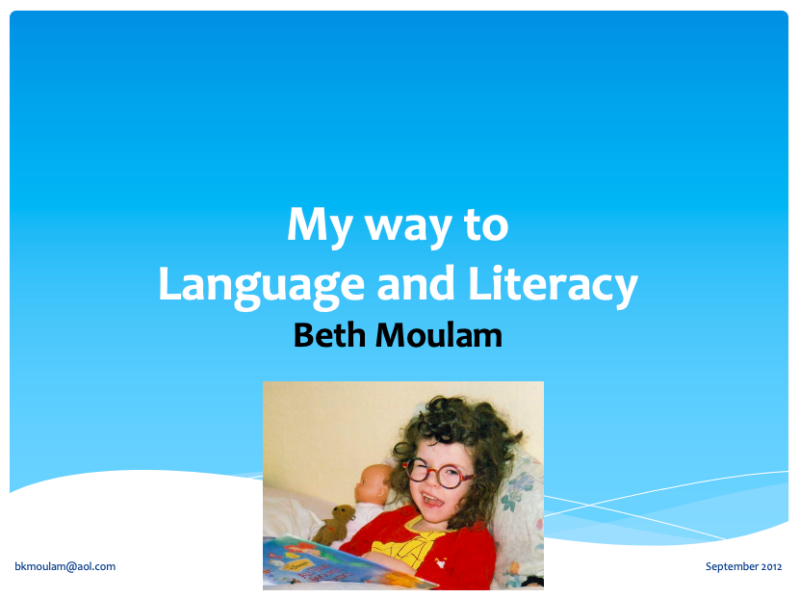 Everything I’ve read recently online and in the press on phonics motivated me to go back and review a presentation I gave 10 years ago. The focus of that session was about me developing literacy, and bang in the middle was my view on phonics. Then today, with world book day I was spurred on to get this posted.
Everything I’ve read recently online and in the press on phonics motivated me to go back and review a presentation I gave 10 years ago. The focus of that session was about me developing literacy, and bang in the middle was my view on phonics. Then today, with world book day I was spurred on to get this posted.
Some of what follows is taken directly from that presentation. Then, in parts, I’ve added more where I have learned more. Please bear in mind as you read I have CP, and both a speech and hearing impairment.
Early years reading
In the year before school, all children at my playgroup were introduced to reading. I loved this and it surprised no one there that I was top a reader. Consequently, it came as a shock when I got to school, age 4, and I was put back onto picture stories. It seemed the teacher refused to believe I could read, but reading for me was suddenly boring!
My 1-1 teaching assistant soon realised I could read. Although she had to persuade the teacher. I have never been one to allow a mistake so would jump in if they tried to trick me. I now know I learned each word as a whole word using the letter shape. Whole word recall is used by many children in their early reading. In junior school as words got longer, we started to break down each word into groups of 3 letters, so I could see the shape. Nothing has changed. Even as an adult.
Introducing phonics
Reception class was my first introduction to Jolly Phonics. For me, it was “not so jolly”. Phonics are supposed to help children learn to read as it establishes the relationship between letters, groups of letters, and sounds to help with sounding out.
I had 2 teaching assistants, one in infants and then one in juniors. When I was writing the presentation in 2012 I got in touch with them. Both said in different ways they thought phonics helped me with developing literacy by helping me to learn my letters. However, they thought sounding out was tiring for me. Although it was hard for them to distinguish what I said, it was possible, because they knew me so well. Phonics might have helped me learn letters but I find it impossible to sound out some sounds verbally and don’t hear others. Add to this that I don’t have an inner voice and it may answer why I struggled.
A chocolate hot water bottle
Sounding out was, and still is, like having a chocolate hot water bottle. Useless! I can always start a word and know when it wasn’t right. Early on I could only experiment with the letters I knew were in the word until the shape was right by the beginning, middle and end. I apply other techniques these days that help, which I’ll come onto.
Missing out on hearing some sounds
Until the age of 10 when I got my first hearing aids, I had not heard the fricative sounds. These are ‘f’, ‘s’, ‘v’, ‘th’, ‘sh’ sounds which was a definite disadvantage with phonics. Even with the hearing aids, I didn’t still hear everything.
Imagine the teacher says ‘the sky is blue and the sun is shining’.
What I heard was ‘..e .ky i. blue and ..e .un i. .ining’.
This wasn’t something we were told by audiology so it came as a surprise. I found just recently some of my old school books from when I was 6. I’d written about Florence Nightingale referring using the word ‘her’ throughout my answers, instead of ‘she’. The next piece of work I got right because the teacher noted my error, then commended me on correct use. What I now know is no one had realised why I made the mistake, I just didn’t hear the ‘sh’ in ‘she’. My poor hearing definitely impacting on me developing literacy early on.
The impact on spelling
I also found my spelling tests for the same school year. I always got all the letters right, but when I was incorrect I had mixed up the shape slightly. As a result, the letters were in the wrong order. It was then noted in my book that when someone re-did the spellings with me 1-1 after 3 practices of writing it down and saying it I always got them right. I guess when we did it 1-1 I was learning the shape, seeing it written, and lip-reading. Until I was 10 no one realised how bad my hearing was.
I do not have dyslexia but I got a dyslexia reading programme at home when I was 8. This involved hearing, reading, and seeing words and starting back at the basics of reading. This was really, really boring, but useful as I had missed lots by having constant glue ear, as well as my poor hearing. This also taught me a text reader really helped for comprehension. I could follow the text on screen and at the same time hear the words. This demonstrated I needed to learn in a multisensory way. Even today I now learn all new vocabulary using multiple strategies.
Alternative learning strategies
In key stage 1, the teaching assistant used different contexts to help me learn new words. The special needs assistant in key stage 2 found I used my DynaVox as a dictionary. I knew what I wanted to type and would go and search for the word, where I knew it was stored, so I got it right. I use a word prediction package today to type, so I guess this was no different. Word prediction is a lifesaver. Between 2002 and 2019 I loved the natural selection on the Lightwriter (I now use Proloqu4Text on an iPad).
At home I was successful if I watched Mum say a word, she then gave me the word in different contexts, wrote it down, put it into the Lightwriter, and explained other words that meant the same thing.
These strategies were coupled at the age of 10 with more advice from the teacher for the hearing impaired on developing literacy. This coincided with my first hearing aids. For all new vocabulary, I needed to see and hear new words in context(s). To see the spelling, to lip-read it and say it. Unfortunately, mainstream secondary didn’t think this was necessary. But once I got to special school they understood the issues and gave me what was needed.
Handwriting and developing literacy
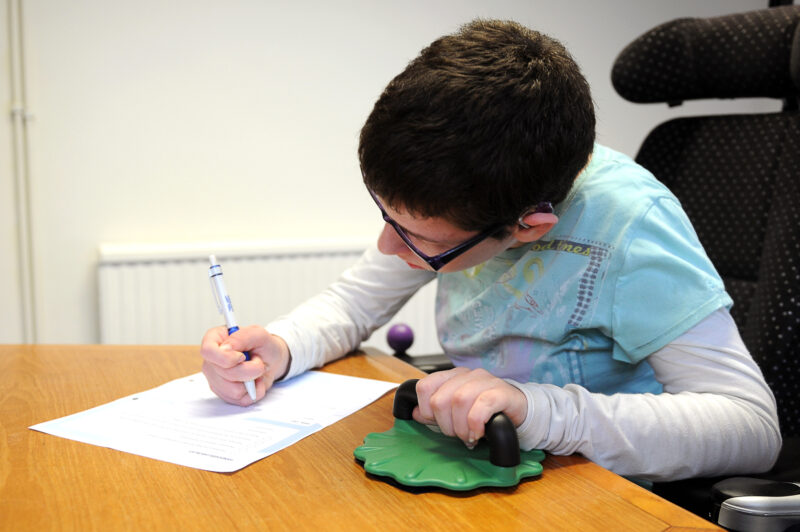 My literacy wasn’t helped by my handwriting. Learning to read isn’t just about seeing and hearing words, other children also were able to reinforce this by writing. My writing looked like a giant spider had crawled over the page as I did everything to make the letters as easy as possible to form. Getting around this wasn’t easy as I couldn’t make the hand movements necessary to pattern the shapes. In the end, after doing a lot of research, Mum had me do things like walking the letter shape. This wasn’t easy as she had to support me to actually walk backward and forwards. This was coupled with doing my hand over her hand patterns holding a pencil. We also made giant play dough letters so I could feel the shapes. Another task was practicing writing in sand and water with my finger/hand.
My literacy wasn’t helped by my handwriting. Learning to read isn’t just about seeing and hearing words, other children also were able to reinforce this by writing. My writing looked like a giant spider had crawled over the page as I did everything to make the letters as easy as possible to form. Getting around this wasn’t easy as I couldn’t make the hand movements necessary to pattern the shapes. In the end, after doing a lot of research, Mum had me do things like walking the letter shape. This wasn’t easy as she had to support me to actually walk backward and forwards. This was coupled with doing my hand over her hand patterns holding a pencil. We also made giant play dough letters so I could feel the shapes. Another task was practicing writing in sand and water with my finger/hand.
Visual learning strategies
As I don’t write well I find it best to type in lower case, the letters are even sized. I also find lower case letters are interesting. They have more memorable shapes that have bits above the other letters and below the line. This makes lower case letters easier to recall than capitals. A row of capitals for me are mainly blocks, which to me are harder to recognise. So, I just use capitals at the beginning of a sentence or, of course, for a noun. This helps me recognise shapes, new sentences, and names quickly.
Throughout mainstream school, visual strategies helped me learn. Everyone used different symbols, so I became used to recognising the words associated with different pictures. This means my own visual language, my internal referencing system, is eclectic. It might have been better if everyone had agreed on one symbol source because it sounds mad to have learned so many different variations for the same word. In some ways, I think this must make me multi-lingual in symbol speak.
Developing a love of books
By the age of 10, I suddenly was not getting on well with reading at school. What had been a very good reading age, ahead of many in my class suddenly became a poor reading age as my peers soared forward. My reading was slow, and we were expected to read in our heads. It seemed impossible because I couldn’t sound out. But this was not helped because I physically find page-turning difficult, even with sticky tabs or paperclips! I read Harry Potter at home using unabridged tapes and following the book at the same time. This helped me decode words I already knew from general speech but couldn’t sound out. It also meant I kept a good pace whilst I fumbled with the pages as I could catch up when ready.
Exploding vocabularies
The explosion of vocabulary in secondary school and no specific vocabulary help meant my reading had plateaued. At this stage, my hearing was also deteriorating and although I had hearing aids I was only getting 95% of what was actually said. In hindsight, there were many other factors at play impacting developing literacy, but it wasn’t a great time for me academically.
The amazing thing for me was the change of hearing aids at 15 to a higher-quality digital set. Suddenly I heard 99% of what is said. Less than 6 months after getting these my vocabulary on standardised tests had jumped by 4 years and continued upwards. I was learning and using new vocabulary every day. Even today if I hear vocab I don’t know I’m not afraid to ask my assistant to explain.
Self-belief
A great deal of credit has to go to my late English Teacher, Ros Brown. She helped me move away from preferring facts. Before meeting her I never completed any work, including my first attempts at GCSEs. With her encouragement, I moved to be more confident, descriptive, and adventurous in my writing. Developing literacy became a goal, especially as my chosen career needed a degree.
Finding my inner ‘voice’
I was about 16 when I found I was different from most people in how I think. Every thought is turned into pictures or visuals. I don’t use any words, just glorious technicolour images. These simply form themselves in my head. It is a bit like watching a film on fast forward. This might explain why some of the strategies used for people with dyslexia, and other learning difficulties, work better for me rather than phonics. The downside to this can often be very graphic thoughts.
Maybe because I don’t hear words when I think that’s why I found it hard to develop my inner voice. I am told children move to read silently about age 8. Not me! I practiced lots but somehow it just wouldn’t come. This typical skill only developed when I was about 17. After I got an iPhone I began reading the news every morning. Suddenly I could just read something I was interested in! However, not being able to read quickly or silently had a huge impact for exams and tests throughout school.
Judging cognition with standardised tests
Assessments have been annoying since I was little, especially exams. My teaching assistant in key stage one says I probably didn’t get enough time. The results were probably right but I was capable of much more. Whilst in key stage 2 my assistant said I still never had enough time. I left questions unanswered which automatically lowered my scores. Throughout education this hasn’t changed which is why I preferred assessed coursework to exams.
I sometimes wondered if my imagination was not good enough and if that was why I struggled. In school everything took much longer, teachers cannot wait for answers, so the focus for me was on just delivering the basics. My storytelling through school always needed scaffolding. I didn’t want to get things wrong. I didn’t have access to a vast enough vocabulary. ‘What happens next?’ is reliant on the programming in a communication aid.
I was always exhausted by holding a pen, trying to type, and/or sit up so I could do the work. Again, developing literacy is much more than just learning the words. Children with CP use twice as much energy as their peers to sit still, and up to 5 times more when we are active. I now know being creative means being I have to relax. Creatively I am at my best in the bath or in bed when my body is 100 percent supported. Sometimes I cannot sleep when my mind goes into overdrive. Now I know I am creative I just need the right time, space, and tools.
Sharing social narratives
My struggle with time and energy does have an impact if I want to recall social stories when I am with others. If I am with someone who knows me well, and they know my social narratives, then I use them to help me. I might use a few keywords verbally, or on my device, then indicate for them to take up the story. Whilst this is a fast and effective method it is not reliable moving forward. I want and need to access my own narratives in an efficient way, something I’ve been working hard to do in recent times.
My superpower
At 19 I discovered I have synaesthesia. I cried when I watched a BBC Horizon programme recommended by my new SLT. It was fascinating to find how brain damage and brain plasticity alter the way we can think. Until then I didn’t realise all my letters had the colours of the Letterland alphabet. This was something static and meaningful. So, now I know shape and colour are the key for me to recalling words. In the early days colour was the missing link to spelling, I wasn’t applying this automatically.
Synaesthesia became my superpower. Knowing I could harness it for learning was like unlocking a genie. These days if I can get something into my visual long-term memory it doesn’t get forgotten. I can read with ease, although I use a text reader, or my assistant reads aloud for academic texts. Without this, I stumble over the ever-developing technical vocabulary. This means I find skim-reading challenging, but hey, this is a long way from where I began.
The joy of creative writing
Around the age of 15, I got eye-gaze for academic work. Sadly, there didn’t seem to be sufficient time in the day to learn this alongside studying towards GCSEs. In the end, it went back as it was an expensive bit of kit to sit on the side at school. I tried again when I got to university but again time wasn’t on my side. More recently I’ve invested in new eye-gaze and suddenly have found the joy of creative writing.
The outcome of my journey is that I do now have good literacy and language. I didn’t follow a conventional learning route but things have worked out. It might have been different if assessments had been easier, or I didn’t need a scribe, or the best hearing aids were available sooner. But I cannot change the past. The important thing is that I have been given the support to be where I am today. My most important message would be never assume one size fits all. Where there is a will to learn there is a way.
These days I have a love of reading, the kindle has been brilliant and when I read I often listen to an unabridged audio version alongside. I don’t need it but it means I lose myself in the story, and isn’t that the aim of a good book? To transport the reader to a different place. So here I am celebrating world book day and developing literacy.
That leaves me to say thank you to The Vale Primary School, Valence Special School, the Surrey ICT team, and the University of York.
You can read more about learning to be literate here.

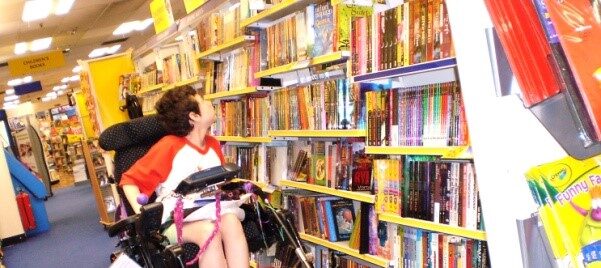
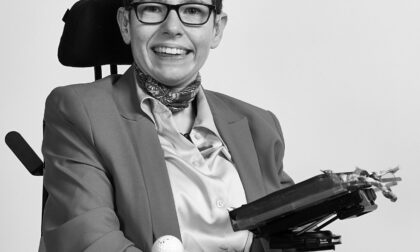
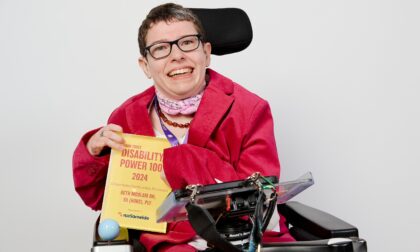
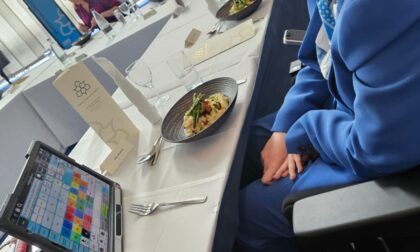
If you found this interesting or
helpful please feel free to share.